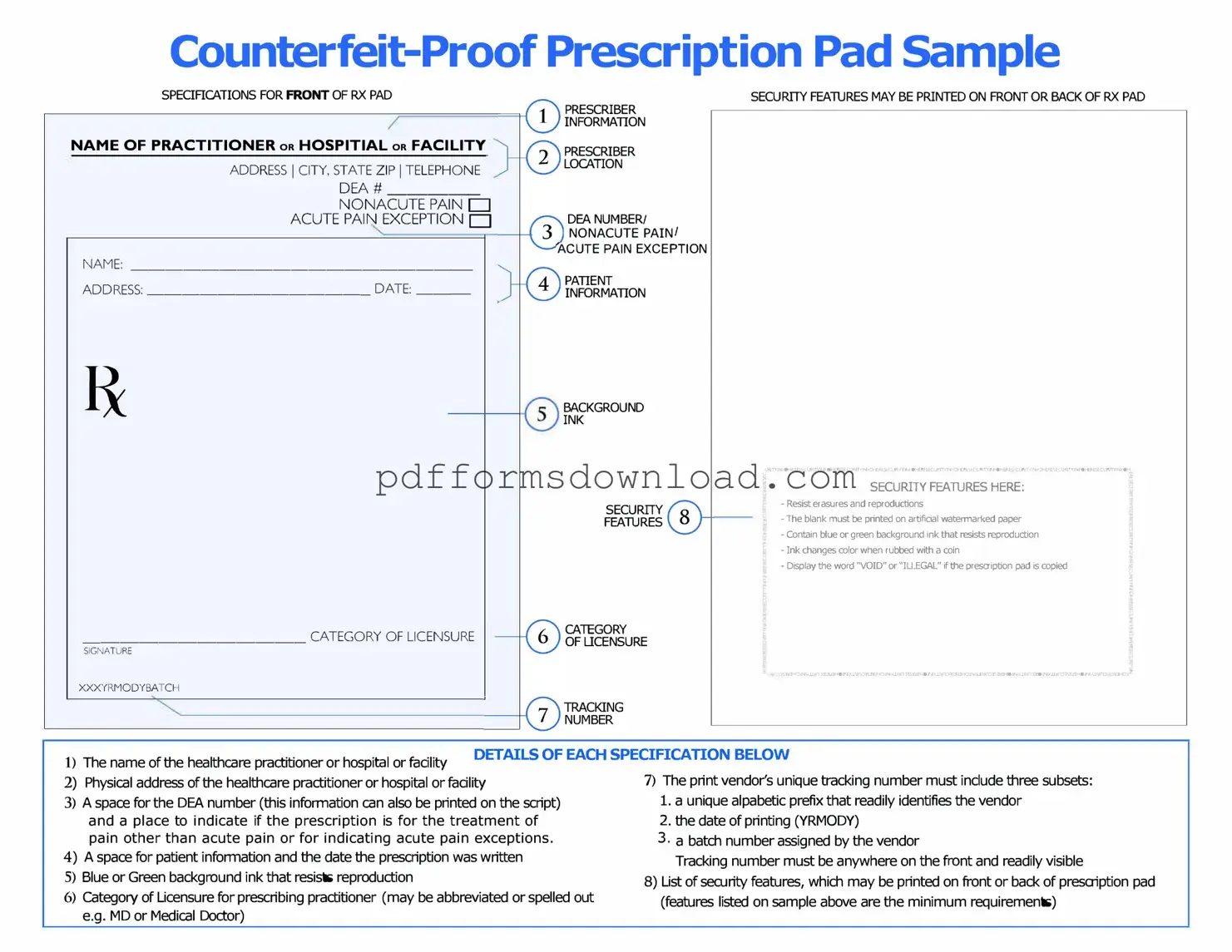What is a Prescription Pad form?
A Prescription Pad form is a document used by healthcare providers to prescribe medications to patients. It typically includes the patient's information, the medication details, dosage instructions, and the provider's signature. This form ensures that prescriptions are written clearly and legally, allowing pharmacists to dispense medications accurately.
Who can use a Prescription Pad form?
Only licensed healthcare providers, such as doctors, nurse practitioners, and physician assistants, can use a Prescription Pad form. These professionals have the authority to prescribe medications based on their training and state regulations.
What information is required on a Prescription Pad form?
A complete Prescription Pad form should include the patient's name, date of birth, and contact information. It must also list the medication name, dosage, frequency, and duration of treatment. Additionally, the prescribing provider's name, contact information, and signature are essential for the form to be valid.
Are there different types of Prescription Pad forms?
Yes, there are various types of Prescription Pad forms, depending on the medication being prescribed. Some forms are specifically for controlled substances, which have stricter regulations due to their potential for abuse. Others may be for non-controlled medications, which typically have fewer restrictions.
Can a patient fill out a Prescription Pad form?
No, patients cannot fill out a Prescription Pad form. Only licensed healthcare providers are authorized to complete and sign these forms. Patients can discuss their symptoms and medication needs with their provider, who will then fill out the form accordingly.
What should I do if I lose my Prescription Pad form?
If a Prescription Pad form is lost, the healthcare provider should report the loss to the appropriate authorities, such as the state pharmacy board. It's crucial to prevent unauthorized use of the form. The provider may need to issue a new prescription for the patient if necessary.
How can I ensure my Prescription Pad form is secure?
To keep a Prescription Pad form secure, healthcare providers should store it in a locked location and limit access to authorized personnel only. Regular audits of prescription practices can also help identify any potential misuse or discrepancies.
What are the consequences of improperly using a Prescription Pad form?
Improper use of a Prescription Pad form can lead to serious legal consequences, including fines, loss of medical license, and criminal charges. Both providers and patients can face repercussions for fraudulent prescriptions, which can harm patient safety and undermine the integrity of the healthcare system.
